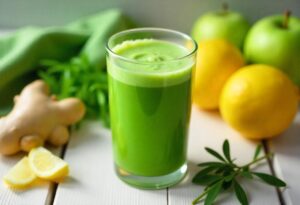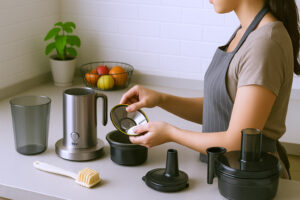There are around 600 different varieties of oranges. But did you guys know that some varieties are finer than others for juicing? Today I’m going to share with you my top six favorite orange types for juicing!
I have been using these specific oranges for years now because they make a great base for juices. They also happen to be super easy to find year round. If you live near an area where citrus is grown then this list will help you get started making your own delicious fresh squeezed orange juice right away.
Best Oranges For Juicing: My Top 6 Recommendations
Valencia Orange – the first type of orange is called Valencia Orange or just Valencia. This is one of the most popular oranges used by commercial growers because it has a very high sugar content which makes it ideal for juicing. They have such great taste that you can use them as your main ingredient or add them into other recipes like smoothies.
They also make delicious juices when blended up with watermelon. I love using Valencia Oranges in my morning green smoothie recipe. You could even blend up a few slices of this citrus fruit along with pineapple chunks and ice cubes to create a refreshing summertime treat. Valencia can grow up to 20 pounds per tree so if you don’t mind having a few extra trees around the house then go ahead and plant them. You won’t regret it!
Mandarin Orange – next up is what many people call the Mandarin Orange – but technically speaking it isn’t an actual mandarin. It is a cross between a pummelo and a tangerine, with sweet juicy flesh that can be used in both fresh juice or as marmalade.
This orange has been cultivated since ancient times and was once one of China’s most important export crops. In fact, during the Ming Dynasty, the Emperor ordered all citrus trees planted within his empire to bear this particular variety. Today, you will find these fruits grown throughout Asia, Europe, and North America. They are available year round but peak from November through March. These oranges tend to be sweeter than Valencias and are perfect for adding flavor to any drink.
Navel Orange – next, we have our regular old Navel oranges. Navels are less sour than their cousins and therefore need less sweetener added. Use about 3-4 teaspoons of raw organic cane sugar to every 4 cups of water. Then squeeze out all the juice from the whole fruit before cutting off the peel. Add the peels back in after squeezing and enjoy!
Satsuma is a Japanese variety of orange that tends to be slightly bitter due to its low acidity level. It has been used in the production of juice and marmalade, but it’s also very popular as an ingredient in cocktails such as the Sazerac or Corpse Reviver 2. Satsuma has been cultivated in the U. S. since 1885, and it’s one of my favorites because its flavor is so sweet and juicy! It also makes an excellent juice as well. The skin on this orange is very thin which means you can get more out of each piece than with other varieties.I like using organic satsumas whenever possible. They are grown without pesticides and have no added sugar. You will find them at your local grocery store year round.
Blood Oranges – the blood oranges are an orange and crimson variety. Blood oranges contain higher levels of vitamin C than normal oranges do. When combined with lemon juice, blood oranges become a beautiful pink color. In addition to being healthy, blood oranges are extremely flavorful and fragrant.
Tangerines – they are an orange variety with a shorter season. Tangelos are another option as well. Both Tangerine and Tangelo oranges are sweet and juicy. Try mixing together two parts tangelo and one part grapefruit juice to create a refreshing cocktail.
Now Let Me Tell You Why I Love Each Of These Oranges So Much…
1) Valencia: Sweetest tasting orange juice ever! Perfect for drinking straight or mixed with milk. Easy to cut open and remove seeds. Can easily be stored in the fridge without spoiling.
2) Mandarins: Very flavorful and sweet. Great for eating alone or paired with berries like strawberries, blueberries, etc.
3) Nevels: Sour tasting but extremely healthy. Best when blended with some lemon juice.
4) Satsumas: Bitter tasting but full of nutrients. This fruit is perfect to use when making juices or smoothies. Not recommended for children under 12 months.
5) Blood Oranges: Smaller size compared to normal oranges. More tart than others. Equally good juice, sorbets, and ice cream. Are great additions to salads.
6) Tangoes: A little bit sweeter than navel oranges but still not too sweet. Also good for pairing with fruits such as apples, pears, grapes, bananas, etc.
7) Tango OJ: Similar taste profile to tangoes but a little bit sweeter. Good for pairing with anything fruity.
Other Variations Of Oranges I Wouldn’t Mind Adding To My List Are:
Grapefruits: One of my favorite types of oranges. Slightly acidic and rich in vitamin C. Pairing options include pineapple, kiwi, melon, cucumber, apple, pear, banana, etc.
Clementines: Another excellent source of Vitamin C. Excellent for kids and adults alike.
Pomelos: Extremely nutritious. Rich in fiber and antioxidants. Pairs perfectly with tropical fruits like coconut, papaya, guava, etc.
Honeydews: High in potassium and vitamins A & K. Low in calories. Makes a wonderful breakfast beverage.
Cara Caras: An exotic looking orange that tastes similar to clementines. Full of nutrition and packed with vitamin C.
If you love drinking orange juice but would like something different try experimenting with these new flavors. And remember…you don’t always have to buy expensive bottled juices either. Freshly made juice tastes way better than store bought stuff anyway.
So there you have it, folks. My top favorites when it comes to juicing oranges. Now let me finish by telling you how to choose the best oranges for juicing…
- Choose oranges that feel heavy for their size.
- Look at the color of your juice, it should be bright and clear.
- The skin is not too thick or thin.
- Avoid those with soft spots on them because they are more likely to have been picked unripe.
- If possible, buy organic fruits as these will taste better than conventionally grown fruit.
- You can also try buying a few different types of oranges in order to find out which one suits your palate best.
- Try to buy from a local market where you know exactly what has gone into making these fruits.
Related Reviews:
- 6 Common Hacks For Juicing A Lemon
- Reviews of 10 Best Commercial Citrus Juicer
- Reviews of 10 Best Juicer Blender Combo
Recent Reviews:
- How to Juice Cleavers: A Simple Guide to Unlock This Herbal Remedy’s Benefits
- The Ultimate Guide: How to Clean Breville Juicer?
- How to Easily Transform Frozen Concentrate into Delicious Juice?
- Juicing Made Easy: No Juicer Required for Clementine Juice
- Revitalize Your Body with Post-Workout Juice Smoothie Recipes
- Revitalize Your Digestion with Juice Shots Recipes







